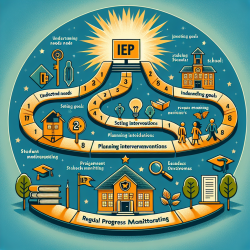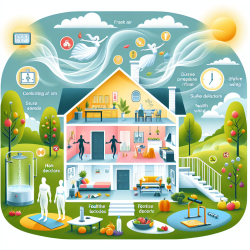Introduction
Communication is a fundamental human interaction, yet many individuals face challenges due to speech impairments. The recent research article titled "Wireless Mouth Motion Recognition System Based on EEG-EMG Sensors for Severe Speech Impairments" offers promising insights into a new frontier for communication aids. This study explores the use of EEG (electroencephalogram) and EMG (electromyograph) data to establish communication pathways for individuals with severe speech impairments.
Understanding the Research
The study conducted by Moon et al. (2024) investigates the feasibility of using a wireless EEG-EMG wearable system to detect mouth movements. The system employs machine learning techniques to classify phonemes based on bioelectrical signals, achieving a classification accuracy of 95%. This research highlights the potential for nonverbal interfacing systems that could provide communication independence for individuals with severe physical impairments.
Implementing the Outcomes
Practitioners in the field of special education and therapy can leverage the outcomes of this research to enhance their skills and approaches. Here are some ways to implement these findings:
- Adopt New Technologies: Integrate EEG-EMG sensor technology into therapy sessions to explore alternative communication methods for students with speech impairments.
- Collaborate with Researchers: Engage with researchers and technologists to stay updated on advancements in EEG-EMG applications and explore collaborative opportunities.
- Customize Therapy Plans: Tailor therapy plans to incorporate nonverbal communication aids, providing students with personalized tools that cater to their unique needs.
Encouraging Further Research
The study's promising results call for further research and exploration. Practitioners are encouraged to participate in or initiate studies that expand on this technology, focusing on:
- Expanding Sample Sizes: Conduct studies with larger and more diverse participant groups to validate and refine the technology's effectiveness.
- Exploring Real-Time Applications: Investigate the potential for real-time neural network modeling to process phonemes in real-time, enhancing communication aids.
- Integrating Multi-Modal Data: Combine EEG and EMG data with other sensory inputs to develop comprehensive communication systems for individuals with complex needs.
Conclusion
The research on EEG-EMG sensors for speech impairments opens new avenues for communication aids, offering hope and potential for individuals who struggle with traditional speech methods. By embracing these innovations and encouraging further research, practitioners can contribute to a future where communication is accessible to all.
To read the original research paper, please follow this link: Wireless Mouth Motion Recognition System Based on EEG-EMG Sensors for Severe Speech Impairments.










